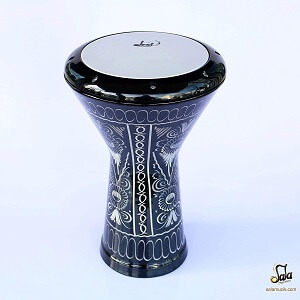Goblet Drum
 The Goblet Drum known for being the foremost percussion instrument in Middle Eastern music. Its single head and goblet shaped body distinguishes it from other similar instruments such as the Indian tabla and pakhawaj and Middle-Eastern frame drums like the tar. Deriving geographically out of Turkey, Armenia and Egypt, the darbuka’s roots are in Oriental Music where distinguished beats and rhythmic resonance are quite common. The darbuka achieves its unique sonic qualities by both the way that it is played as well as how it is constructed.
The Goblet Drum known for being the foremost percussion instrument in Middle Eastern music. Its single head and goblet shaped body distinguishes it from other similar instruments such as the Indian tabla and pakhawaj and Middle-Eastern frame drums like the tar. Deriving geographically out of Turkey, Armenia and Egypt, the darbuka’s roots are in Oriental Music where distinguished beats and rhythmic resonance are quite common. The darbuka achieves its unique sonic qualities by both the way that it is played as well as how it is constructed.
Just how each musical instrument has its own language, or bol, which communicates a specific rhythmic pattern. The versatility of darbuka music is understood when it has been practiced for many years. More possibilities of how it can be played are constantly being discovered including not just Eastern beats but Western styles as well. The drum beautiful sound and resonance can be attributed to the goblet-shape of its body, a shape ideal as a resonant chamber for sound across all frequency ranges. Larger drums offer a louder and deeper tone compared to smaller ones that are much softer and quiet but each has its moment and place.